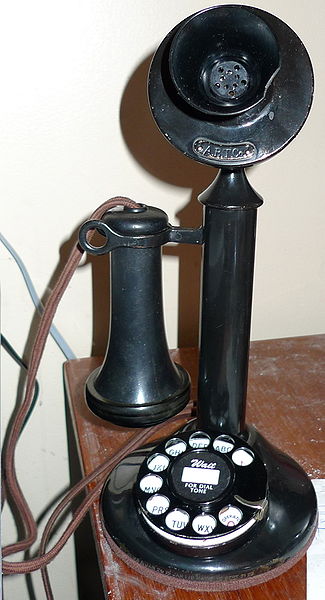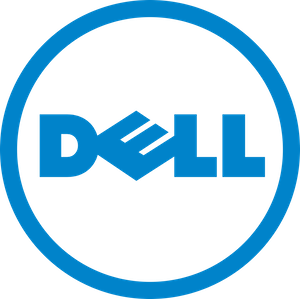Author Archives: networkingnerd
Author Archives: networkingnerd

A few recent conversations that I’ve seen and had with professionals about automation have been very enlightening. It all started with a post on StackExchange about an unsuspecting user that tried to automate a cleanup process with Ansible and accidentally erased the entire server farm at a service provider. The post was later determined to be a viral marketing hoax but was quite believable to the community because of the power of automation to make bad ideas spread very quickly.
Everyone in networking has been in a place where they’ve typed in something they shouldn’t have. Whether you removed the management network you were using to access the switch or created an access list that denied packets that locked you out of something. Or perhaps you typed an errant debug command that forced you to drive an hour to reboot a switch that was no longer responding. All of these things seem to happen to people as part of the learning process.
But how many times have we typed something in to create a change and found that it broke more than we expected? Like changing a native VLAN on a trunk and bringing down Continue reading

A couple of months ago, I was on a panel at TechUnplugged where we talked about scaling systems to large sizes. Here’s a link to the video of that panel:
One of the things that we discussed in that panel was applications. Toward the end of the discussion we got into a bit of a back-and-forth about applications and the systems they run on. I feel like it’s time to develop those ideas a bit more.
My comments about legacy applications are pointed. If a company is spending thousands of dollars and multiples hours of time in the engineering team to reconfigure the network or the storage systems to support an old application, my response was simple: go out of business.
It does sound a bit flippant to think that a company making a profit should just close the shutters and walk away. But that’s just the problem that we’re facing in the market today. We’ve spent an inordinate amount of time creating bespoke, custom networks and systems to support applications that were written years, or even decades, ago in alien environments.
We do it every day without thinking. We have to install this specific Java version Continue reading

Networking is undergoing a huge transformation. Software is surely a huge driver for enabling technology to grow by leaps and bounds and increase functionality. But the hardware underneath is growing just as much. We don’t seem to notice as much because the port speeds we deal with on a regular basis haven’t gotten much faster than the specs we read about years go. But the chips behind the ports are where the real action is right now.
Intel has jumped into networking with both feet and is looking to land on someone. Their work on the Data Plane Development Kit (DPDK) is helping developers write code that is highly portable across CPU architecture. We used to deal with specific microprocessors in unique configurations. A good example is Dynamips.
Most everyone is familiar with this program or the projects that spawned, Dynagen and GNS3. Dynamips worked at first because it emulated the MIPS processor found in Cisco 7200 routers. It just happened that the software used the same code for those routers all the way up to the first releases of the 15.x train. Dynamips allowed for the emulation of Cisco router software but it Continue reading

I was reading a trivia article the other day about the excellent movie Sex, Lies, & Videotape when a comment by the director, Stephen Soderbergh, caught my eye. The quote, from this article talks about how people use video as a way to distance ourselves from events. Soderbergh used it as a metaphor in a movie made in 1989. In today’s society, I think video is having this kind of impact on our careers and our discourse in a much bigger way.
People have become huge consumers of video. YouTube gets massive amounts of traffic. Devices have video recording capabilities built in. It’s not uncommon to see a GoPro camera attached to anything and everything and see people posting videos online of things that happen.
My son is a huge fan of videos about watching other people play video games. He’ll watch hours of video of someone playing a game and narrating the experience. When I tell him that he’s capable of playing the game himself he just tells me, “It’s not as fun that way Dad.” I, too, have noticed that a lot of things that would normally have been written down are Continue reading

Congratulations! We have managed to slay the beast that is wireless. We’ve driven a stake through it’s heart and prevented it from destroying civilization. We’ve taken a nascent technology with potential and turned it into the same faceless corporate technology as the Ethernet that it replaced. Alarmist? Not hardly. Let’s take a look at how 802.11 managed to come to an inglorious end.
Wireless used to be the wild frontier of networking. Sure, those access points bridged to the traditional network and produced packets and frames like all the other equipment. But wireless was unregulated. It didn’t conform to the plans of the networking team. People could go buy a wireless access point and put it under their desk to make that shiny new laptop with 802.11b work without needing to be plugged in.
Wireless used to be about getting connectivity. It used to be about squirreling away secret gear in the hopes of getting a leg up on the poor schmuck in the next cube that had to stay chained to his six feet of network connectivity under the desk. That was before the professionals came in. They changed wireless. They put a Continue reading

The debate on encryption has heated up significantly in the last couple of months. Most of the recent discussion has revolved around a particular device in a specific case but encryption is older than that. Modern encryption systems represent the culmination of centuries of development of making sure things aren’t seen.
Did you know that twenty years ago the U.S. Government classified encryption as a munition? Data encryption was classified as a military asset and placed on the U.S. Munitions List as an auxiliary asset. The control of encryption as a military asset meant that exporting strong encryption to foreign countries was against the law. For a number of years the only thing that could be exported without fear of legal impact was regular old Data Encryption Standard (DES) methods. Even 3DES, which is theoretically much stronger but practically not much better than it’s older counterpart, was restricted for export to foreign countries.
While the rules around encryption export have been relaxed since the early 2000s, there are still some restrictions in place. Those rules are for countries that are on U.S. Government watch lists for terror states or governments deemed “rogue” states. Continue reading

It’s been a year since Aruba Networks became Aruba, a Hewlett-Packard Enterprise Company. It’s been an interesting ride for everyone involved so far. There’s been some integration between the HPE Networking division and the Aruba teams. There’s been presentations and messaging and lots of other fun stuff. But it all really comes down to the policy of non-interference.
HPE has done an admirable job of keeping their hands off of Aruba. It sounds almost comical. How many companies have acquired a new piece and then done everything possible to integrate it into their existing core business? How many products have had their identity obliterated to fit in with the existing model number structure?
Aruba isn’t just a survivor. It’s come out of the other side of this acquisition healthy and happy and with a bigger piece of the pie. Dominick Orr didn’t just get to keep his company. Instead, he got all of HPE’s networking division in the deal! That works out very well for them. It allows Aruba to help integrate the HPE networking portfolio into their existing product lines.
Aruba had a switching portfolio before the acquisition. But that was just an afterthought. It Continue reading

A Candlestick Phone (image courtesy of WIkipedia)
There’s a great piece today on how Slack is causing disruption in people’s work habits. Slack is a program that has dedicated itself to getting rid of email, yet we now find ourselves mired in Slack team after Slack team. I believe the real issue isn’t with Slack but instead with the way that our brains are wired to handle communication.
People get interrupted all the time. It’s a fact of life if you work in business, not just IT. Even if you have your head down typing away at a keyboard and you’ve closed out all other forms of distraction, a pop up from an email or a ringing or vibrating phone will jar your concentration out of the groove and force your brain to deal with this new intruder into your solitude.
That’s evolution working against you. When we were hunters and gatherers our brain had to learn how to deal with external threats when we were focused on a task like stalking a mammoth or looking for sprouts on the forest floor. Our eyes are even developed to take advantage of this. Your peripheral vision will pick up Continue reading

If you saw the news coming out of Cisco Live Berlin, you probably noticed that Internet of Things (IoT) was in every other announcement. I wrote about the impact of the new Digital Ceiling initiative already, but I think that IoT is a bit deeper than that. The other thing that seems to go hand in hand with discussion of IoT is big data. And for most of us, that big data is going to be a big problem.
Internet of Things is about dumb devices getting smart. Think Flowers for Algernon. Only now, instead of them just being smarter they are also going to be very talkative too. The amount of data that these devices used to hold captive will be unleashed on something. We assume that the data is going to be sent to a central collection point or polled from the device by an API call or a program that is mining the data for another party. But do you know who isn’t going to be getting that data? Us.
IoT devices are going to be talking to providers and data collection systems and, in a lot of cases, each other. But they Continue reading

Cisco announced their new Digital Ceiling initiative today at Cisco Live Berlin. Here’s the marketing part:
And here’s the breakdown of protocols and stuff:
Funny enough, here’s a presentation from just three weeks ago at Networking Field Day 11 on a very similar subject:
Cisco is moving into Internet of Things (IoT) big time. They have at least learned that the consumer side of IoT isn’t a fun space to play in. With the growth of cloud connectivity and other things on that side of the market, Cisco knows that is an uphill battle not worth fighting. Seems they’ve learned from Linksys and Flip Video. Instead, they are tracking the industrial side of the house. That means trying to break into some networks that are very well put together today, even if they aren’t exactly Internet-enabled.
Digital Ceiling isn’t just about the PoE lighting that was announced today. It’s a framework that allows all other kinds of dumb devices to be configured and attached to networks that have intelligence built in. The Constrained Application Protocol (CoaP) is designed in such a way as to provide data about a great number of devices, not just lights. Yet lights are the launch Continue reading

Cash register by the National Cash Register Co., Dayton, Ohio, United States, 1915.
Imagine a world where every aspect of a project gets charged correctly. Where the massive amount of compute time for a given project gets labeled into the proper department and billed correctly. Where resources can be allocated and associated to the projects that need them. It’s an exciting prospect, isn’t it? I’m sure that at least one person out there said “chargeback” when I started mentioning all these lofty ideas. I would have agreed with you before, but I don’t think that chargeback actually exists in today’s IT environment.
The idea of chargeback is very alluring. It’s been on slide decks for the last few years as a huge benefit to the analytics capabilities in modern converged stacks. By collecting information about the usage of an application or project, you can charge the department using that resource. It’s a bold plan to change IT departments from cost centers to revenue generators.
IT is the red headed stepchild of the organization. IT is necessary for business continuity and function. Nothing today can run without computers, networking, or phones. However, we aren’t a visible part Continue reading

In my old IT life I once took a meeting with a networking company. They were trying to sell me on their hardware and get me to partner with them as a reseller. They were telling me how they were the number two switching vendor in the world by port count. I thought that was a pretty bold claim, especially when I didn’t remember seeing their switches at any of my deployments. When I challenged this assertion, I was told, “Well, we’re really big in Europe.” Before I could stop my mouth from working, I sarcastically replied, “So is David Hasselhoff.” Needless to say, we didn’t take this vendor on as a partner.
I tell this story often when I go to conferences and it gets laughs. As I think more and more about it the thought dawns on me that I have never really met the third best networking vendor in the market. We all know who number one is right now. Cisco has a huge market share and even though it has eroded somewhat in the past few years they still have a comfortable lead on their competitors. The step down into the next tier of Continue reading

Watching a real butcher work is akin to watching a surgeon. They are experts with their tools, which are cleavers and knives instead of scalpels and stitches. They know how to carve the best cut of meat from a formless lump. And they do it with the expert eye of a professional trained in their trade.
Butcher is a term that is often loaded with all manner of negative connotations. It makes readers think of indiscriminate slaughter and haphazard destruction. But the real truth is that a butcher requires time and training to cut as they do. There is nothing that a butcher does that isn’t calculated and careful.
Why all the discussion about butchers? Because you’re going to see a lot more comparisons in the future when people talk about the pending Dell/EMC acquisition. The real indiscriminate cutting has already started. EMC hid an undisclosed number of layoffs in a Dec. 31 press release. VMware is going to take a 5% hit in jobs, including the entire Workstation and Fusion teams.
It’s no secret that the deal is in trouble right now. Investors are cringing at some of the provisions. The Virtustream spin out was rescinded after Continue reading

Dell announced today the release of their newest network operating system, OS10 (note the lack of an X). This is an OS that is slated to build on the success that Dell has had selling 3rd party solutions from vendors like Cumulus Networks and Big Switch. OS10’s base core will be built on an unmodified Debian distro that will have a “premium” feature set that includes layer 2 and layer 3 functionality. The aim to have a fully open-source base OS in the networking space is lofty indeed, but the bigger question to me is “what happens to Cumulus”?
As of right this moment, before the release of Dell OS10, the only way to buy Linux on a Dell switch is to purchase it with Cumulus. In the coming months, Dell will begin to phase in OS10 as an option in parallel with Cumulus. This is especially attractive to large environments that are running custom-built networking today. If your enterprise is running Quagga or sFlow or some other software that has been tweaked to meet your unique needs you don’t really need a ton of features wrapped in an OS with a CLI you will barely use.

A Candlestick Phone (image courtesy of Wikipedia)
Greg Ferro (@EtherealMind) posted a thought provoking article about collaboration in his Human Infrastructure magazine (which you should be reading). He talks about the death of IP Telephony and the rise of asynchronous communications methods like Slack. He’s got a very interesting point of view. I just happen to disagree with a few of his assertions.
Greg’s stance that IP Telephony is dead is a bit pointed to say the least. He is correct that the market isn’t growing. It is also true that a great number of new workers entering the workforce prefer to use their smartphones for communications, especially the asynchronous kind. However, desk phones are a huge part of corporate communications going forward.
IT shops have a stilted and bizarre world view. If you have a workforce that has to be mobile, whether it be for making service calls or going to customer sites for visits, you have a disproportionately large number of mobile users for sure. But what about organizations that don’t have large mobile populations? What about financial firms or law offices or hospitals? What about retail organizations? These Continue reading
I made a joke tweet the other day:
It did get lots of great interaction, but I feel like part of the joke was lost. Every one of the things on that list has been X in “This is the Year of X” for the last couple of years. Which is sad because I would really like IPv6 to be a big part of the year.
Ars Technica came out with a very good IPv6-focused article on January 3rd talking about the rise in adoption to 10% and how there is starting to be a shift in the way that people think about IPv6.
One of the takeaways from the article that I found most interesting was a quote from Brian Carpenter of The University of Aukland about address structure. Most of the time when people complain about IPv6, they say that it’s stupid that IPv6 isn’t backwards compatible with IPv4. Carpenter has a slightly different take on it:
The fact that people don’t understand: the design flaw is in IPv4, which Continue reading

It’s the first day of 2016 and it’s time for me to look at what I wanted to do and what I plan to accomplish in the coming 366 days. We’ve got a busy year ahead with a leap day, the Olympics, and a US presidential election. And somewhere in the middle of all that there’s a lot of exciting things related to tech.
Looking back at my 2015 goals, I think I did a fairly good job:

It was almost a year ago that I set forth the idea to start writing all my blog posts in Markdown. I’ve been doing my best to keep up with that throughout the year and now I’m fifty Markdown posts into my goal. How is it working out so far?
Learning to write in Markdown took some adjustment. Before, I had just used the web editor or the occasional HTML editing suite to write my posts. Most of the HTML was hidden. With Markdown, you have to think about what you’re going to do before you start writing it. Where are the links going to appear? How is your post going to be organized? Putting a bit more thought into your post gives you more structure to your thoughts. That’s something that’s helped my writing a bit.
The table layout for the 2015 Cisco Live Twitter List really wasn’t all that difficult either. Once I put the initial code together, it was just a simple copy/paste job after that. I’m toying with the idea of putting all my notes into Markdown as well. But given how terrible I am with taking typed notes that may not happen.

We’ve all been in that meeting. We’re learning the important facts about a company and their awesome technology. We think we’ve got a handle of the problem they’re solving and how we can apply it to our needs. And then…BAM! Our eyes are assaulted by a billboard full of company logos. We’re told how every one of these companies think that this product or solution is awesome. And because they think it’s awesome and bought it, you should think it’s awesome as well and buy it too.
This particular exchange in a presentation has a term: the NASCAR slide. When I came up with the term years ago during a Tech Field Day presentation, I referred to the fact that the slide was covered by all of the logos of customers and sponsors, not unlike the side of a NASCAR race car or the coveralls worn by the drivers. It turned the presentation into a giant neon sign signaling all the companies that bought the solution.
Vendors love to tell you who their customers are. They love holding those solution bidding wins over their competitor’s heads and informing the populace that a company like Victoria’s Continue reading

Every once in a while, I like to see who is clicking through to my blog. It helps me figure out what’s important to write about and who reads things. I found a recent comment that made me think about what I’m doing from a different perspective.
I get occasional inbound traffic from Reddit. The comments on Reddit are a huge reason to follow threads on the site. In one particular thread on /r/networking linked back to my blog as a source of networking news and discussion. But a comment gave me pause:
https://www.reddit.com/r/networking/comments/3mpjpz/networking_websites/cvgyfye
And I quote:
Cons : they almost all know each other and tend to promote each other content.
This was a bit fascinating to me. Of the people in that particular comment, I’ve only ever met one in person. I do know quite a few people in the networking space as part of my career, both related to Tech Field Day and just through writing.
It is true that I share quite a bit of content from other writers. My day job notwithstanding, I feel it is my duty to identify great pieces of writing or thought-provoking ideas and share it Continue reading